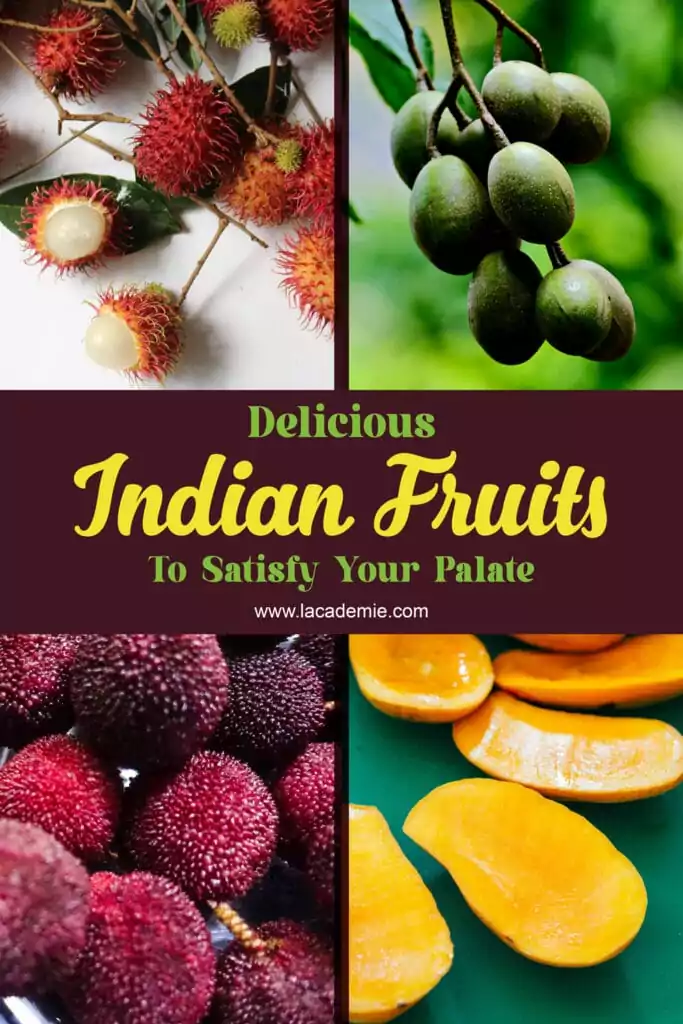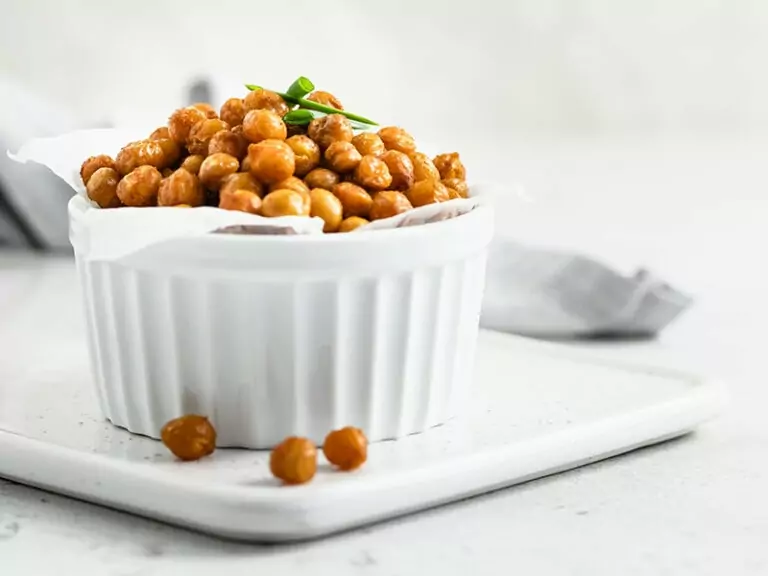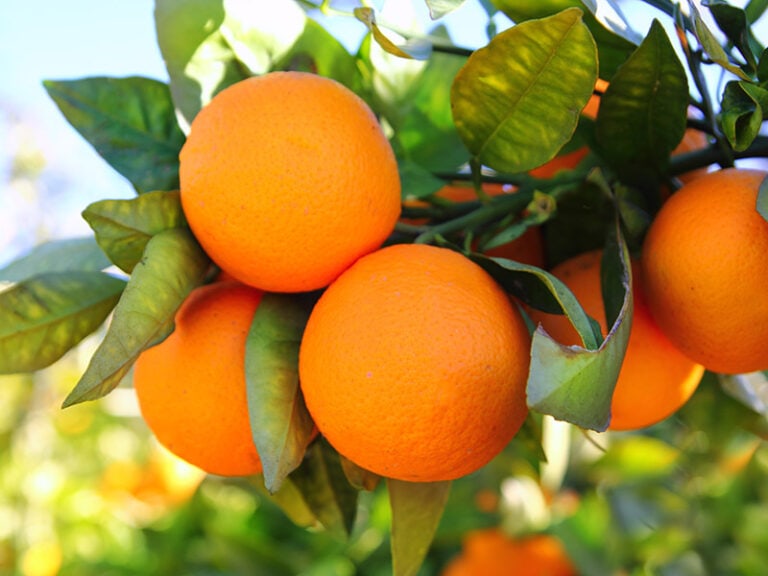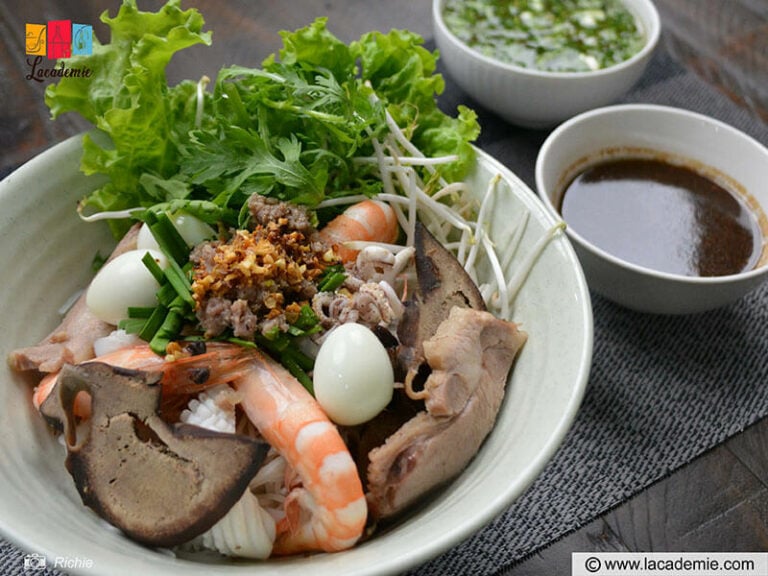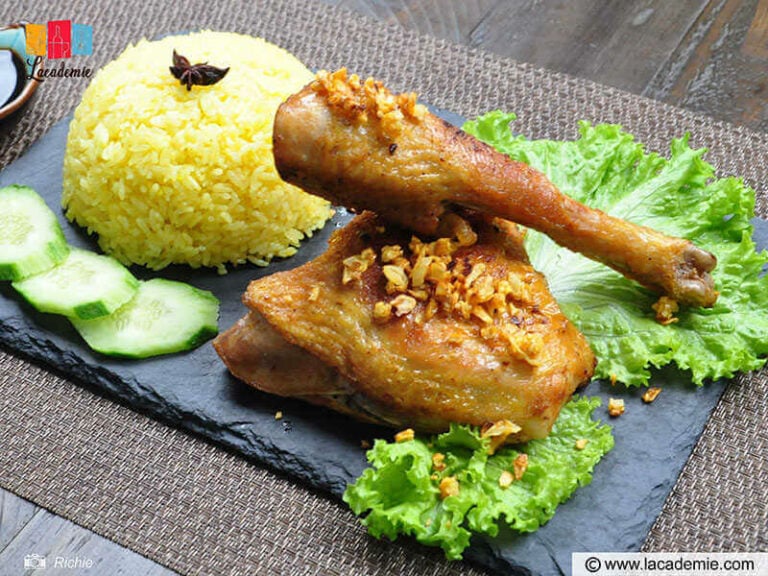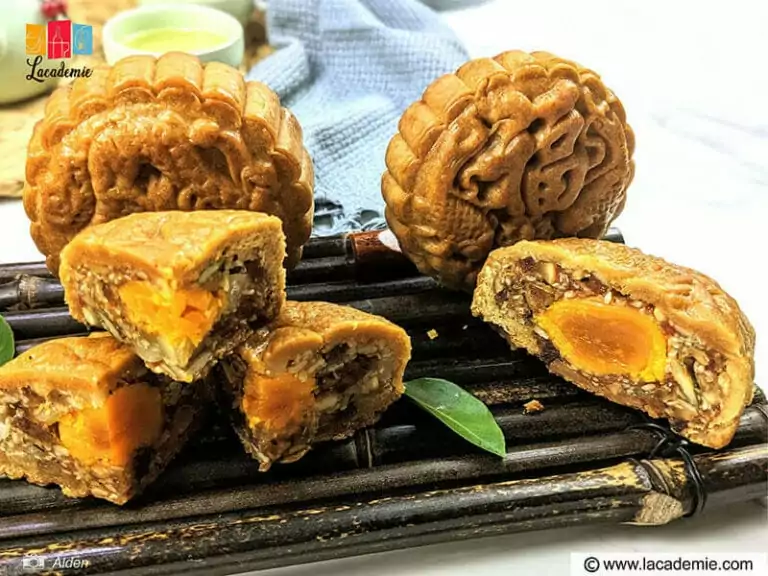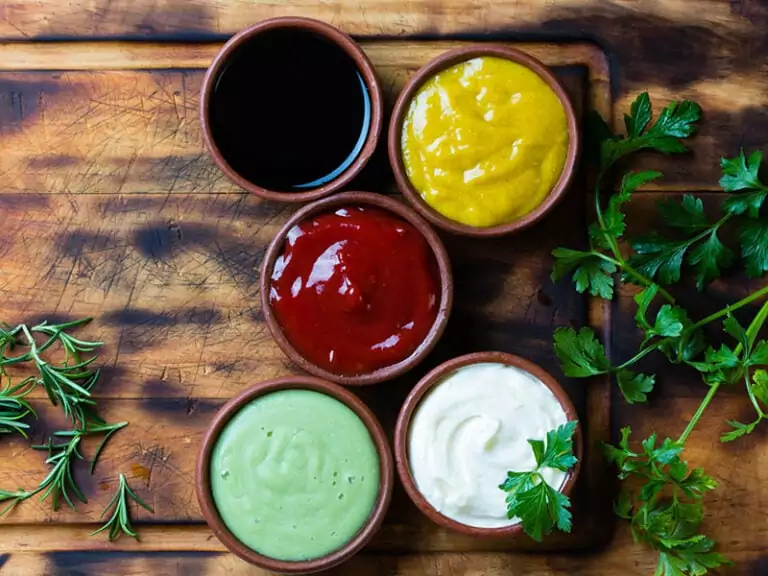Do you love Indian fruits? Have you ever tried them? It is an exciting experience to consume delicious and favorite fruits in this South Asia country. This post will show a list of outstanding fruits you should not miss in India.
Besides a list of common choices, this article will help you get general and specific views about these fruits by describing their appearance, flavor, and other relevant information. Therefore, let’s read it right now to find out everything.
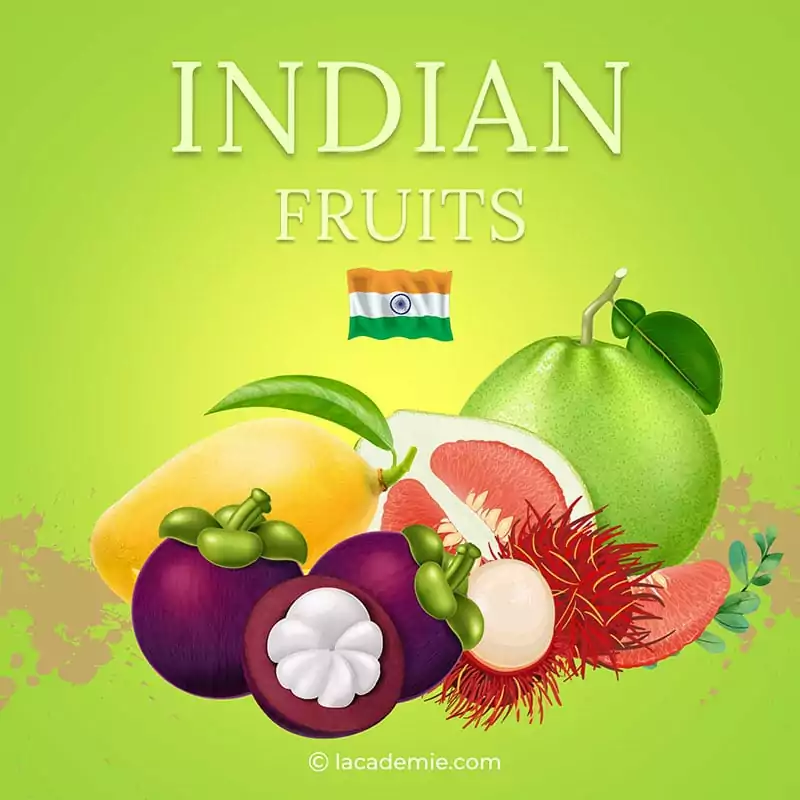
Excellent Indian Fruits Containing Only One Seed
If you are looking for a list of Indian fruits with only one seed, you are in the right place as this section will give you the different types of fruit containing one seed in India. Let’s check them out.
1. Ambarella – Indian Hog Plum
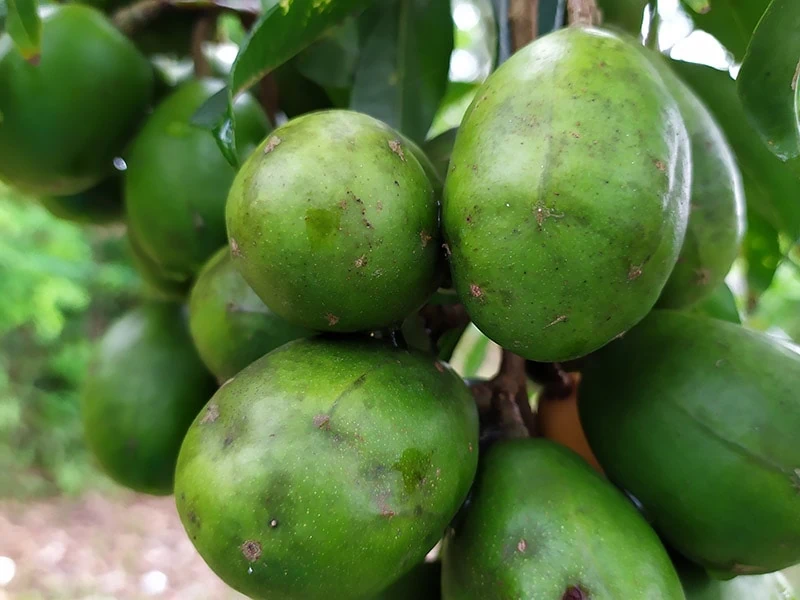
It is a shortcoming when you do not try Ambarella in India. It is a famous fruit in this country, and you can find it commonly in Kerala, Tamil Nadu, Goa, Maharashtra, and Karnataka. Indians often call it as Ambade Kaai or Ambate.
In the Caribbean countries, it is called “Golden Apple” and plays an essential role in the cuisine of this region. You can find this fruit in many yummy Indian foods such as juice, pickle, fruity cocktails, and fresh dessert fruit.
This fruit has a typical oval shape. You can find about 12 fruits in a bunch. Green hue and hard texture are outstanding features when unripe, but they will have golden-yellow color when ripe. Predominantly, it consists of a fibrous pit in the middle.
Its flavor is a combination of the sourness of mango and the slight sweetness of pineapple. Furthermore, you can feel a bit of tangy flavor while consuming this fruit. The sweet version of it is known as Kasi Ambate.
Nutrients: A source of calories, protein, carbs, vitamin C, A, calcium, iron, fiber, and phosphorus.
Season: Its season is in the fall and winter months in India.
How to eat: You can peel or consume its rind. The best way to eat Hog Plum is to dip into chili salt or shrimp paste.
Explore some fantastic health benefits of yummy Ambarella.
2. Indian Sherbet Berries – Phalsa
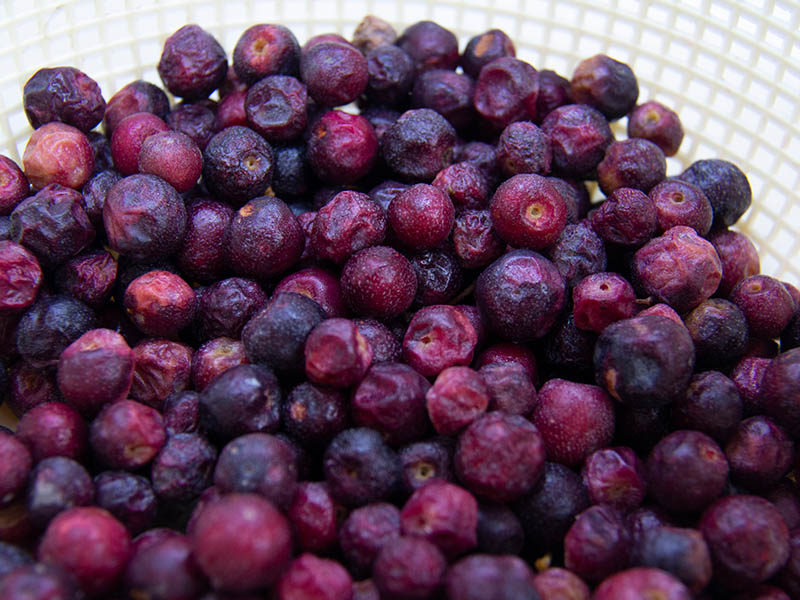
This fantastic fruit belongs to the Malvaceae family. It is native to Varanasi of India and planted widely throughout this nation. Buddhist scholars brought it to other Asian countries and many parts worldwide.
It is a tiny fruit with outstanding deep purple. You can think of the appearance of blueberries when looking at this fruit. It is an excellent edible drupe. And, it is easy to buy this incredible fruit in local markets in India.
The mixture of sweetness and tartness of this fruit will fascinate you immediately. Indians usually combine it with sugar to make sherbet or squash. Moreover, you can eat it fresh to enjoy the natural taste. Also, it acts as an astringent, cooling, and stomachic agent.
Nutrients: Plenty of calories, carbs, calcium, and phosphorus.
Season: People usually pick it from March to April in the South and May to June in the North.
How to eat: If you want to eat it raw, just consume around the seed after washing. Moreover, it is good to squeeze it to get the juice.
3. Mimusops – Khirni/ Rayan
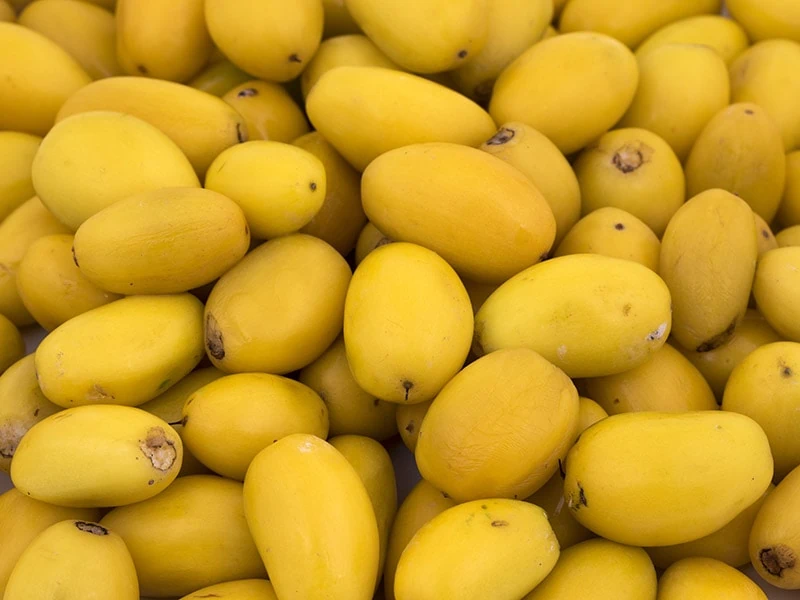
You will regret it if you miss this delicious berry. You can find it in the Indian subcontinent, Southeast Asian countries, and China. It is cultivated widely in the Central regions and Deccan Peninsula in India. Khirni is the local name used popularly in India and South Asian countries.
It looks appealing in golden and smooth skin. It is hard to forget the typical yellow color of its yummy pulp. You can find a large seed in the middle of this fruit. It has a milky and sweet flavor that reminds me of the taste of Sapota.
In India, its season often lasts from April to June, and you can come across many Khirnis that are sold as a street treat in various Indian places, such as local markets. Besides delicious food, it has many health benefits. Primarily, it is a common choice for dental ailments.
Nutrients: Rich in proteins, carbs, fats, vitamin C, A, antioxidants, tannins, and triterpenoids.
Season: It season runs from April to June.
How to eat: It is possible to consume its flesh around the seed after washing.
4. Rambutan
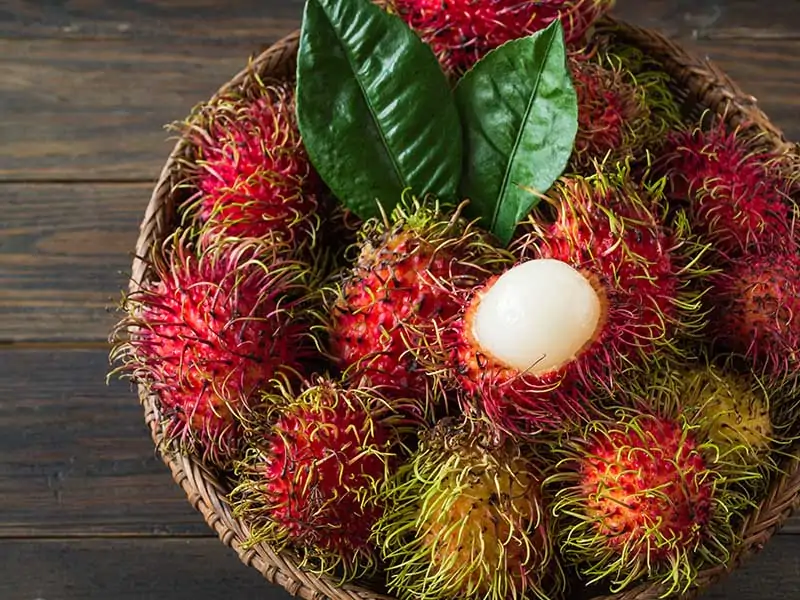
When speaking of Indian fruits, I have to refer to Rambutan in this list. It is an iconic fruit of Southeast Asian countries. In India, it appears widespread on the western coast of Karnataka and Kerala.
Its structure is similar to Lychee, Pulasan, and Longan, with three parts, including skin, flesh, and seed. Its name comes from the word “Rambut” in Malay, which means “hair”. It refers to the countless spines on the surface of its rind.
This fruit has distinctive round and oval shapes. You can acknowledge it thanks to particular reddish leathery skin. After discarding its skin, you have the chance to enjoy the exquisite sweet taste and a bit of acidity from its whitish or pale pink flesh.
It is not good to consume its seed because it is bitter. Besides local Rambutan, Thailand is the leading Rambutan exporter of this South Asian country. It has an appealing fragrance that comes from countless volatile organic compounds.
Nutrients: Rich in carbs, negligible fat, calories, fatty acids, oleic, and vitamin C.
Season: It is available from July to October.
How to eat: Peel its skin by your hands and consume its flesh around the seed. Or, use a knife to slice a line on its flesh surface and get the seed out of it before serving.
5. Black Plum – Jamun
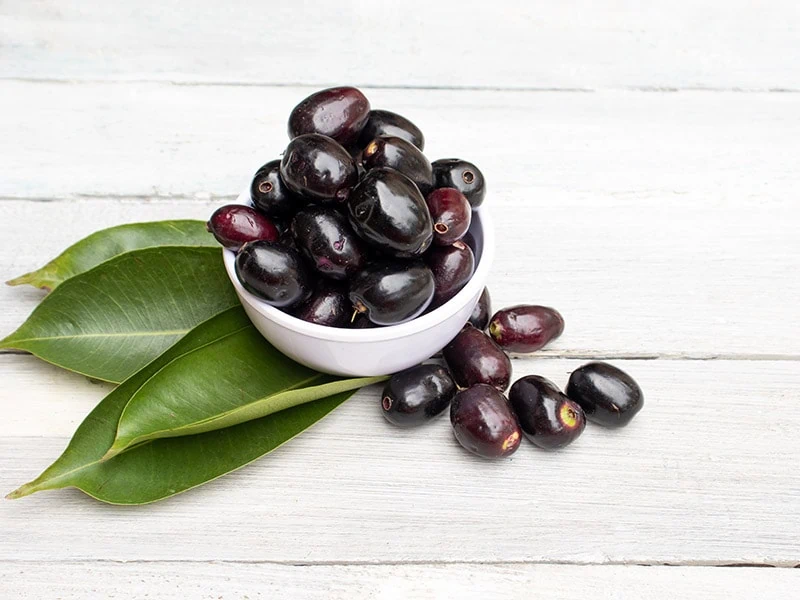
Jamun is also known as Java plum, Jambolan, or Black plum. It belongs to the Myrtaceae family. It comes from the Indian subcontinent and spreads to many world regions. Sometimes, people will confuse it with blackberry when listening to its name.
This yummy fruit appeared in the US in 1911. It is the leading food of birds like civets, jackals, or fruit bats. You can see Jamun in oval or oblong shapes. Unripe Jamun will have green skin, and it turns black when mature.
If you love fruit that contains sweetness and sourness, it is a good option. In addition, you can feel a bit of astringent flavor from this typical fruit. Indians often eat it raw or add to sauces, jams, juice, syrup, sorbet, fruit salads, and jelly.
Nutrients: A source of carbs, negligible fat, calories, and vitamin C.
Season: It is ripe from June to July.
How to eat: Consume its flesh around the seed after washing.
Find out some essential information about Black Plum.
6. Dasheri Mango
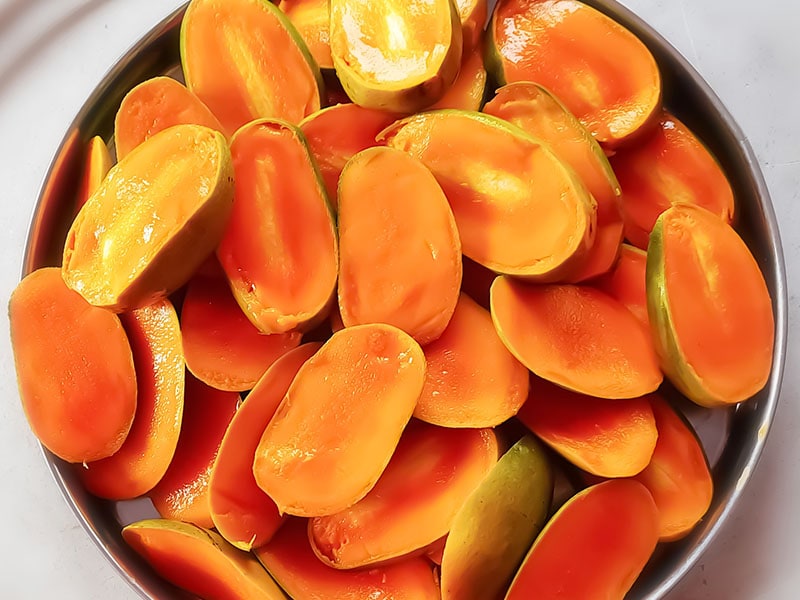
When speaking of Indian fruits, it is a pity not to mention Dasheri mango. It appeared for the first time in Lucknow district in the 18th century. This outstanding fruit is cultivated commonly in northern India. Uttar Pradesh is the place that produces the most Dasheri mango in India.
Its appearance looks basic and rustic with a thin green or yellow skin outside. Its flesh is crispy and green when unripe and becomes soft and smooth when ripe. Its eye-catching yellow flesh will make you want to taste it immediately.
Sweetness is the prominent flavor of this mouthwatering fruit. Indians usually eat fresh mango or make snacks, desserts, smoothies, shakes, and juices from this fruit. It is the key exported fruit to Singapore, Hongkong, Malaysia, and other countries.
Nutrients: It contains vitamin A, C, zinc, calcium, and iron.
Season: It is available in the summer months in India.
How to eat: You can peel and eat its flesh. In addition, you can slice around the seed and cut the lines on its flesh, then push it up.
7. Pulasan
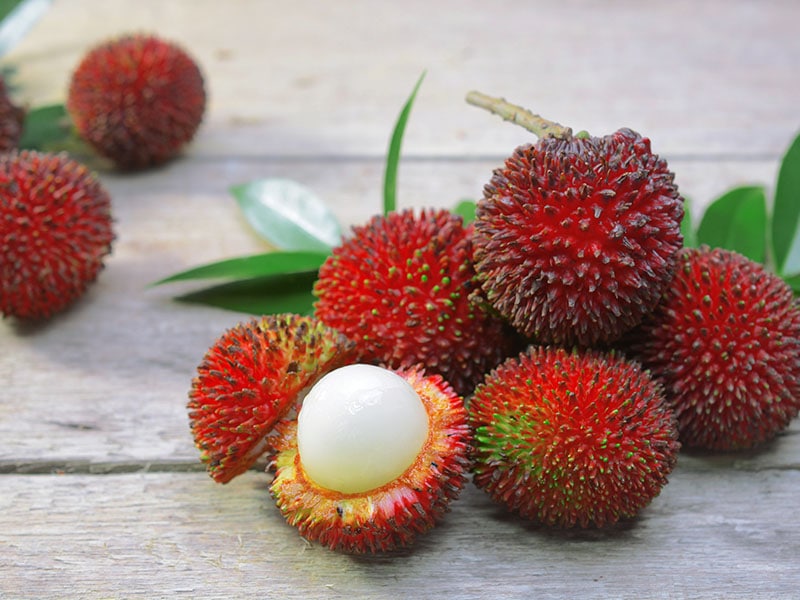
If you are looking for a sweet treat for your party, Pulasan is an intelligent choice. It is a member of Sapindaceae and has a close relation to Rambutan. Occasionally, you can confuse with Rambutan due to the similarities in appearance.
It has its origin in Peninsular Malaysia, and its name comes from the word “Pulas” (twist) in Malay. Also, it is an excellent Thai dessert loved by many tourists. Sweetness is the primary flavor, and it is sweeter than Rambutan. It is famous in Kerala of India.
Typically, Pulasan has an oval shape with thick and leathery skin. It looks attractive in deep-red color. There are numerous tiny spines on the skin surface. Its yellowish-white and succulent flesh will refresh your taste buds right away. You should remove its seed while consuming.
Nutrients: Plenty of vitamin C, calcium, proteins, carbs, and iron.
Season: Its primary season lasts from July to September, and another season runs from December to February.
How to eat: You can enjoy it the same way to consume Rambutan.
Take a trip to the garden to consume mouthwatering Pulasan.
Most Popular Indian Fruits Containing More Than One Seed
This part is for those who need a list of delicious Indian fruits containing many seeds. It will help you classify fruits before consuming when taking a trip to India.
8. Ice Apple/ Sugar Palm Fruit – Targola/ Taal
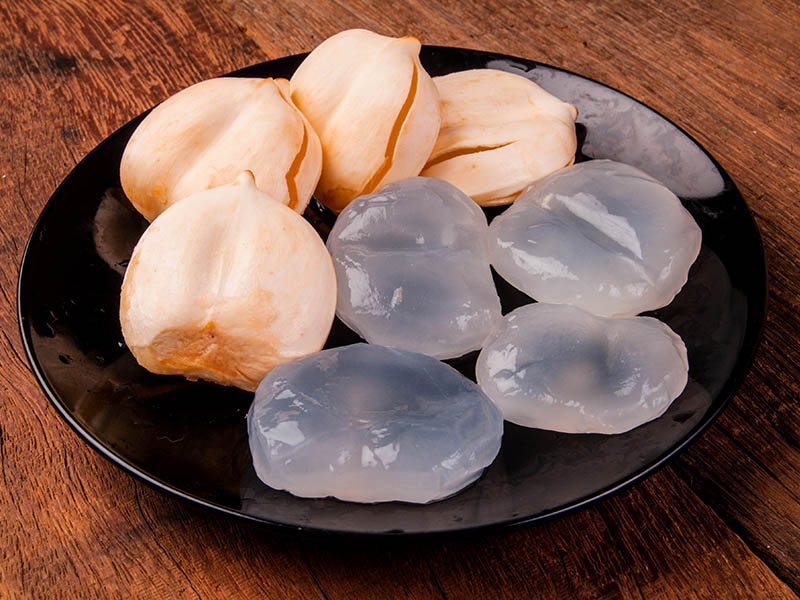
If you are looking for fresh and delicious fruit for hot summer days, Targola or Ice Apple is an excellent suggestion. It originates in the Indian subcontinent and Southeast Asia. You can find it in Tamil Nadu, Maharashtra, Goa, Kerala, Andhra Pradesh, and South India.
Usually, its diameter is about 3.9 to 7.1 inches. It is easy to recognize it, thanks to the black husk. After cutting the top section of it, jelly seed sockets will appear. You can find about 2 to 4 jelly seeds per fruit. Their appearances are similar to Lychee with pale-white color.
A yellowish-brown skin will cover around the jelly seeds part. You will feel a natural and light sweetness from its jelly flesh. It is possible to think of the taste and texture of coconut meat while consuming this fruit.
You can eat the thin skin of this fruit. It is a perfect experience when enjoying sweet juice, toddy, an alcoholic beverage made from Targola. You can combine it with thickened milk to make Taal-Kheer for dessert.
Nutrients: It has a lot of sodium, potassium, and other minerals.
Season: It is available in the summer months (late-April to July) in India.
How to eat: You just need to get its jelly flesh out of the fruit and mix it with sugar to consume.
9. Carandas Cherry – Karonda
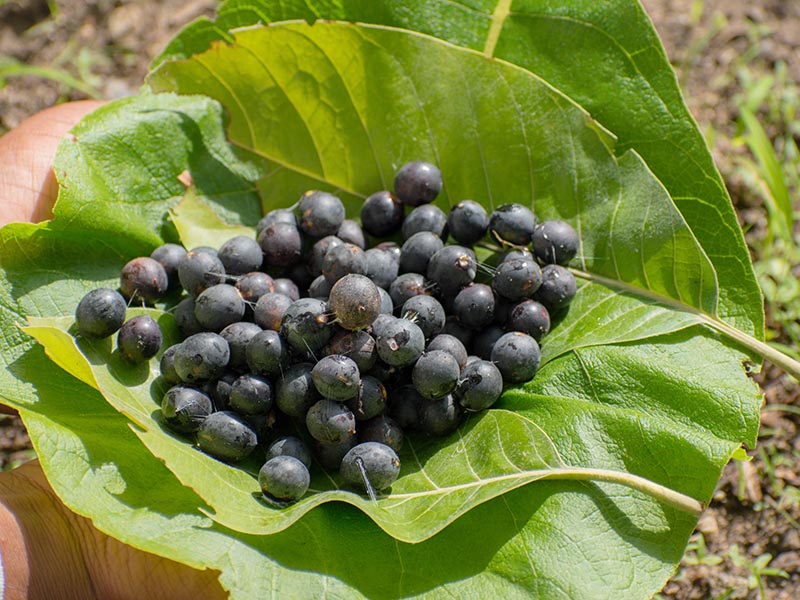
When referring to exotic Indian fruits, it is impossible not to mention Carandas Cherry or Karonda. People usually call it Carandas Plum, Bengal Currant, or Christ’s Thorn in English. You can find its taste in Indian pickles, spices, and condiments.
High temperature is the best condition for its development. Its cultivation commonly occurs in the western Bengal, Ghats, Siwalik Hills, and western coastal areas of Goa and Maharashtra. Also, it’s also widespread in other South Asian countries.
You often find this wild berry in pink color when unripe, but it will turn purple when ready to consume. It contains some tiny seeds in the middle. Its tart flavor of it will tickle your taste buds right away. It will be more delicious when consumed with rock salt.
Nutrients: You can find a lot of vitamin C, iron, and other minerals from it.
Season: It is often ripe from August to October.
How to eat: The simple way to eat Carandas Cherry is to consume whole fruit after washing and remember to remove its seed.
10. Camachile – Jungli Jalebi
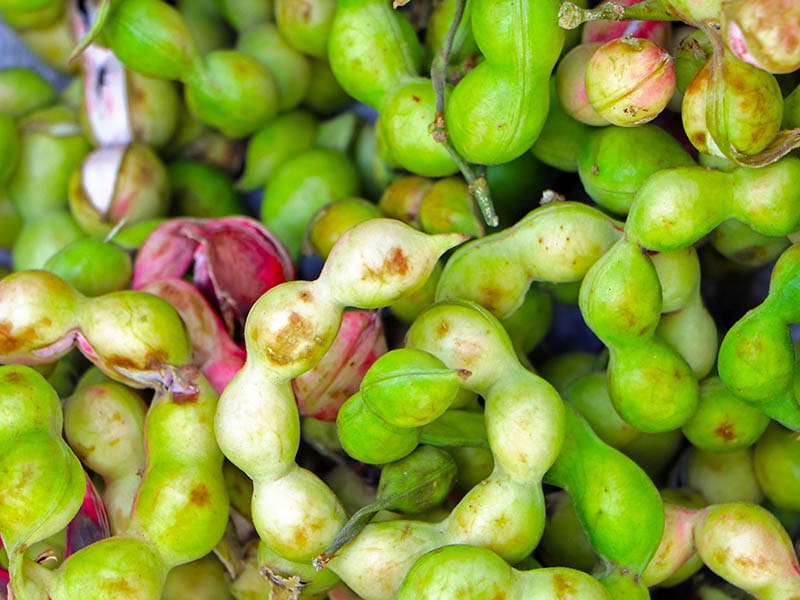
Camachile or Manila Tamarind is a fruit you can find in many places in India like Maharashtra, Kerala, Tamil Nadu, West Bengal, and Karnataka. It originates in Pacific Coast, Mexico, South America, and Central America.
It is grown commonly in Southeast Asia, South Asia, the Caribbean, and many other world regions. It is also known as Jungli Jalebi in India because its appearance is pretty similar to Indian sweet Jalebi.
It is a pod made up of flowers of the tree. When ripe, it will have a characteristic pink color. It has a pink or white pulp layer inside. Typically, you can find about 5 to 6 black seeds from each Camachile.
Except for the skin, it is possible to use its pulp and seeds. You can find this fruit in different sweet treats in India since its sweet-tangy flavor goes really well with each other. It is good to add tangy seeds to curries. In addition, it is also used as a medicine.
Nutrients: Rich in vitamin C, B, potassium, and sodium.
Season: Its season lasts from February to March or May.
How to eat: You just need to remove the skin by hand and eat its flesh and remember to discard the seeds.
11. Langsat – Langsah/Lotka
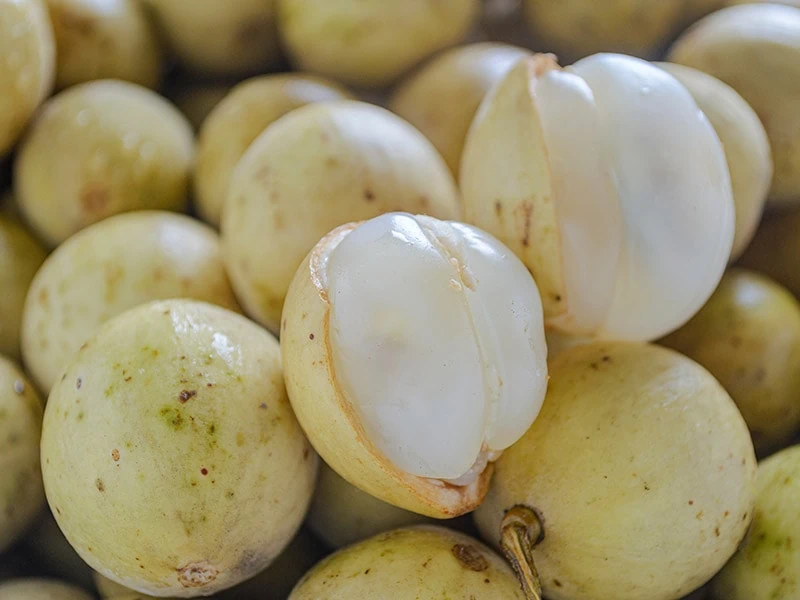
Langsat is a unique Indian fruit you must try when coming to this nation. It is common in the eastern and southern of India, and the Nilgiri hills are the place that has the most Langsat in India. It is a member of the Mahogany family and native to Southeast Asia.
It usually exists in round, elliptical, or oval shapes. It is about 0.59 to 1.97 inches in size, and you can imagine a small potato when looking at its appearance. A yellow hair layer surrounds it.
You will find small segments inside its thick skin. It looks like peeled garlic. Its white aril is a blend of sweetness and acidity. The aril wraps around flat seeds, and each section contains a seed.
Its flavor will remind you of the taste of grape and grapefruit because they are pretty similar. In particular, its flesh is a rich source of fructose, glucose, and sucrose. A larger version of it is often called Duku.
Nutrients: It is time to add vitamin A, C, thiamine, and riboflavin to your body.
Season: It is ripe from April to September in India.
How to eat: Simply peel its rind and consume the flesh around the seed.
Let’s try Langsat to understand more about its flavor.
12. Mangosteen – Mangustaan
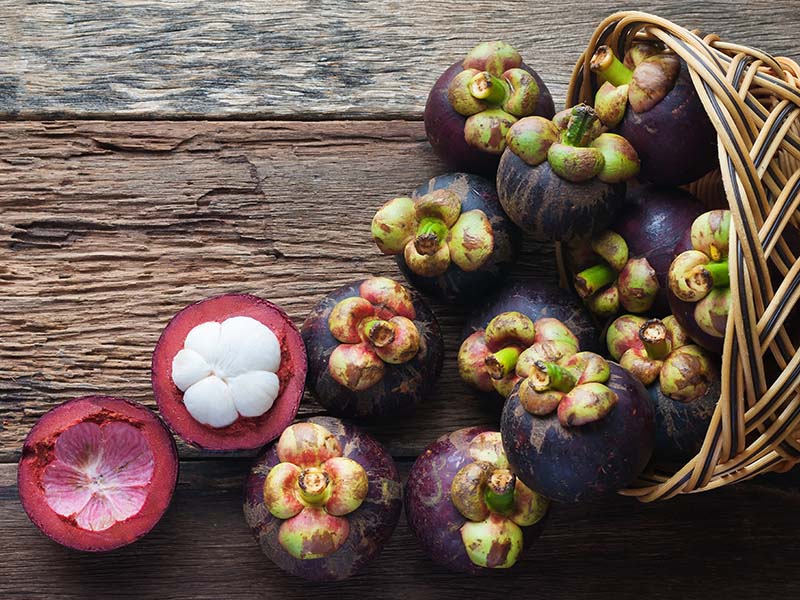
It is a pity not to taste Magosteen or Mangustaan when coming to India. This fruit originates in the tropical areas surrounding the Indian Ocean. In the new era of technology, it is commonly grown in Southeast Asia, Colombia, and Puerto Rico.
Mangosteen cultivation vigorously develops in the Nilgiri hills and Southern India. It appears in so many toothsome Thai dishes that people think of it as a Thailand national fruit. It is believed that it appeared in India in the 18th century.
You can easily recognize it, thanks to dark purple skin. It will be green when unripe. After removing its thick rind, about 4 to 8 opaque segments will show up. It is time to enjoy its sweetness and sourness and fall in love with its juiciness.
Nutrients: Carbs, calories, vitamin C, B, calcium, magnesium, and phosphorus.
Season: Its season runs from July to October and April to June in India.
How to eat: Peel its entire skin by hands or knives and separate its segments to consume juiciness flesh.
13. Wood Apple – Bael
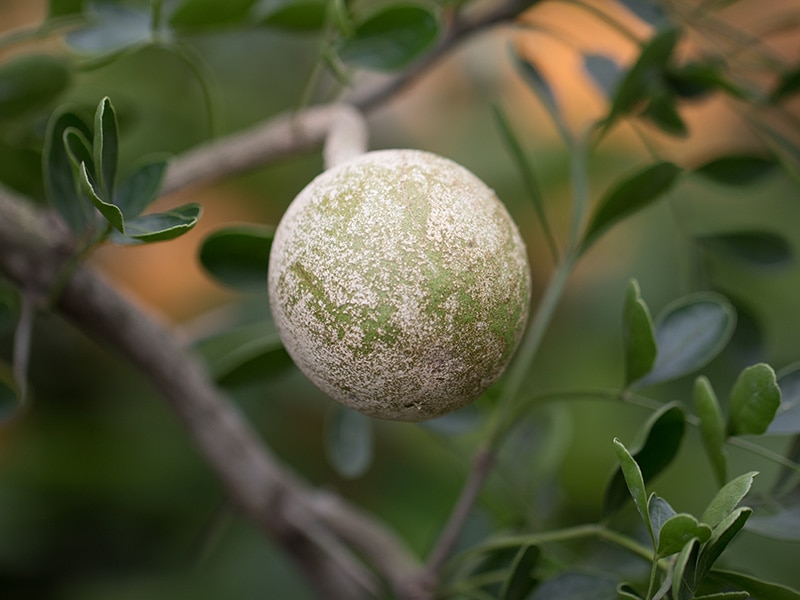
Bael or Wood apple is a versatile fruit that appears in many Indian recipes from fresh to dried forms. This fruit is native to the Indian subcontinent and Southeast Asia.
It is a medium-sized fruit with a diameter of 5 to 12 centimeters. A thick and hard rind covers it. You can recognize it thanks to its distinctive green and smooth skin. And the yellow shade will show up when it is ripe.
It consists of 8 to 15 sections with incredible pulp. You will be impressed by the excellent aroma and dominant orange hue of its pulp. Each section will contain a flattened-oblong seed. You can think of a pear when looking at its shape.
Besides the incredible aroma, its sweetness will tickle your taste buds immediately. Thanks to its exceptional flavor, Wood Apple is a standard option for many delicious Indian drinks. However, it is possible to feel the tangy and slightly astringent taste in some types.
Overall, its taste is similar to marmalade, and its fragrance smells like roses.
Nutrients: It includes protein, beta-carotene, vitamin C, B, riboflavin, niacin, calcium, fiber, and potassium.
Season: It is available from February to May in India.
How to eat: You can peel the entire skin or cut it into 2 halves and use a spoon to get its flesh.
14. Elephant Apple – Chalta
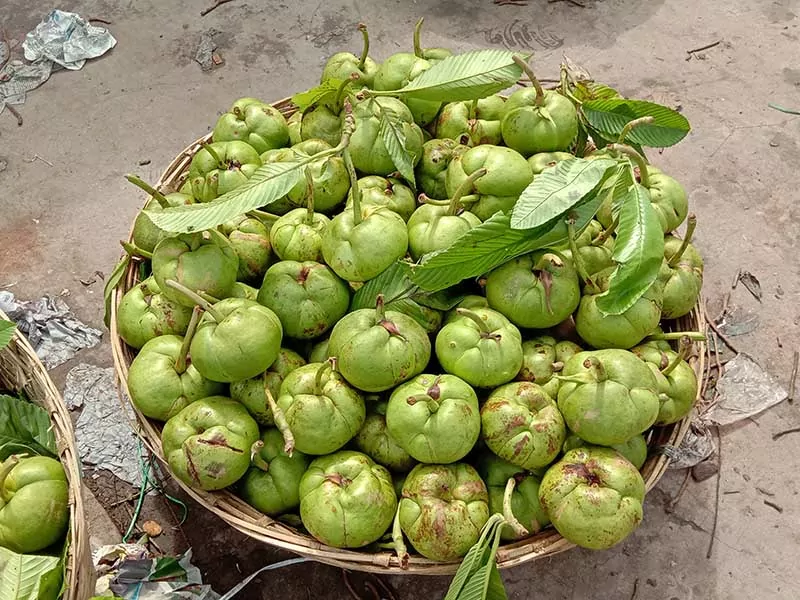
Elephant Apple (Chalta or Dillenia Indica) is another well-known Indian fruit I want to introduce. It is one of the most delicious fruits originating from China and tropical Asia and is an excellent option to use for pickles or chutney.
This fruit vigorously develops in moist conditions and wet soils, common in semi-tropical forests and swamps. Naturally, it is the primary food of monkeys, deer, and elephants, so it is impossible to collect this from crucial forest regions in India.
Its size is similar to a grapefruit and has a yellow-green color when unripe. It will turn leathery brown shade when ripe. Chalta includes about 15 carpels, and each carpel consists of a fibrous pulp and five seeds.
You will immerse yourself in the tart flavor and mildly sweetness of this excellent fruit. In addition, its crunchiness will make you flutter immediately. Indians usually use it to make curries, jams, and jellies.
Nutrients: It is time to supplement vitamin E, C, B, potassium, beneficial fats, amino acids, and proteins to your body.
Season: This season extends from October to February in India.
How to eat: It is simple to consume it when you just need to peel its skin, cut it into pieces and mix it with honey or sugar to eat.
It is time to take a closer look at Elephant Apple and try it.
15. Pomelo – Chakotra/ Batabi Lebu
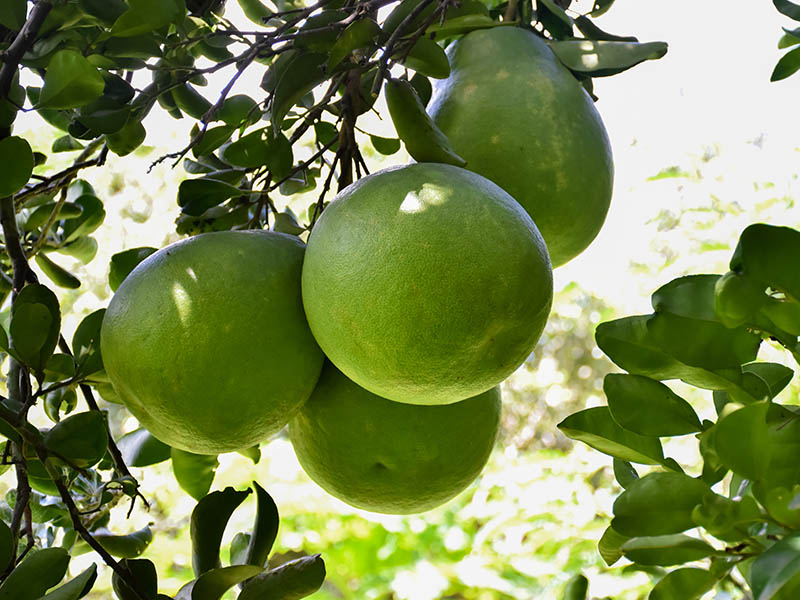
If you love the characteristic taste and aroma of citrus fruit, Pomelo or Chakotra is an ideal suggestion you should try when traveling to India. Southeast Asia is the home of this yummy fruit. It plays an essential role in many festivals and holidays in Southeast Asia countries.
It is a citrus fruit variety that you can find everywhere in India. Pomelo cultivation vigorously develops in northeastern India, Karnataka, Kerala, and West Bengal. It is straightforward to find this fruit in the local markets in this South Asian country.
It is associated with cultural celebrations in the Garo Hills when Indians will spin a cord-tied pomelo around the waist and dance.
It is a large fruit and is considered an ancestor of grapefruit. It looks dominant with thick green skin outside. After peeling its rind, about 11 to 18 succulent segments will appear. Their flavor is similar to mild grapefruit with a bit of bitterness.
It is necessary to remove the membranes layer outside the segments before eating because they are bitter and chewy. Depending on the varieties, it has a few large or countless seeds.
Nutrients: Rich in carbs, calories, protein, fiber, vitamin C, and riboflavin.
Season: It is expected from December to February.
How to eat: Peel its rind, separate its segment, and remove its thin-film before eating.
16. Apple Ber
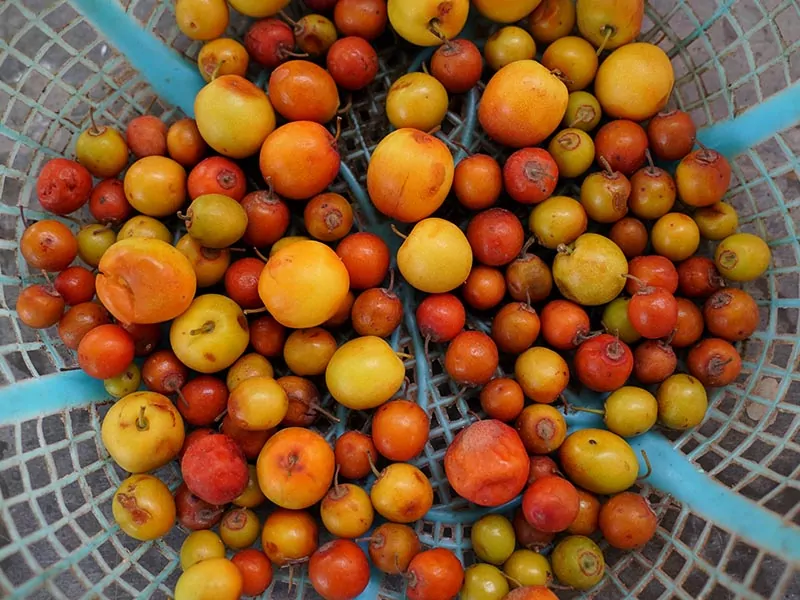
Apple Ber, also known as Chinese Apple, Chinese Date, or Indian Plum, is a mouthwatering apple kind you should not ignore. You can find it in many shapes and sizes. However, it is popular in oval, oblong, round, or obovate shapes.
The smooth, thin, and wrinkled skin is the primary feature of its appearance. Typically, it often appears in green color when unripe and red when ripe. I am sure you will be addicted to its juicy and aromatic flesh. The softness and enchanting sweetness will make you flutter.
This fruit is native to the Indo-Malaysian area. Nowadays, it is widespread in Southern Africa, the Middle East, China, and Pacific Islands. It is planted widely in Maharashtra and Karnataka in India.
It is a rich source of vitamin C. There are many ways to use this fruit. Indians often eat fresh ripe fruit, add to stews, dry, or make powder. Underripe Apple Ber usually appears in delicious candies.
Nutrients: It is time to add calories, carbs, fiber, protein, vitamin C, and potassium by eating Apple Ber.
Season: You can buy it easily from November to February.
How to eat: Because you can consume its skin, you just need to wash and eat its flesh.
17. Rose Apple – Champakka
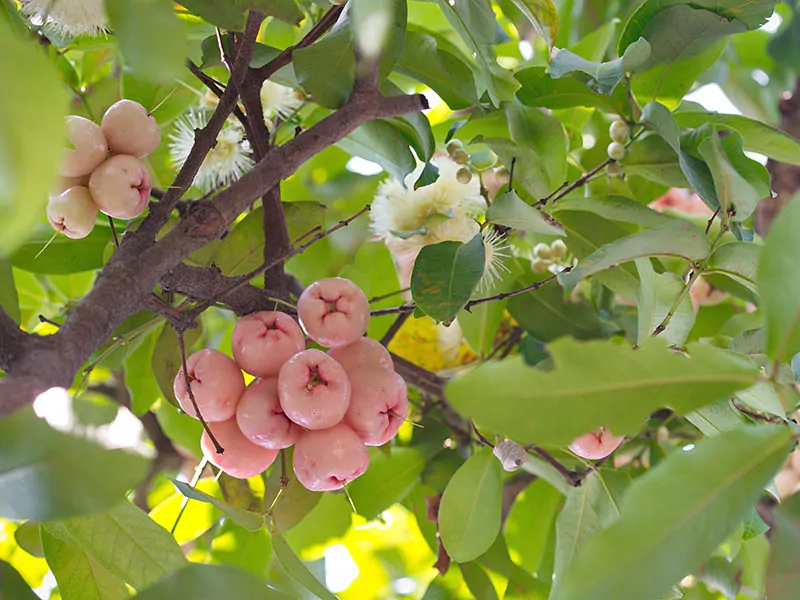
Have you ever tried Rose Apple in India? If not, it is time to give it a shot – this fantastic fruit is native to the Malay Peninsula, Greater Sunda Islands, and the Nicobar Islands. Nowadays, you can see it in many regions of the world.
It is used widely in the East Godavari district of Andhra Pradesh and Kerala. In India, people usually call it Champakka. Besides Rose Apple, you can use these English names, including Java apple, wax apple, wax jambu, and Semarang rose apple.
It is an edible berry with a bell-like shape. It has a wide range of colors, such as white, green, pale green, red, crimson, purple, or black. And it is safe to consume its skin. You will fall in love with the spongy and white flesh.
It has about 2 to 3 seeds in the middle. It is time to immerse yourself in its crunchiness and enchanting sweetness. However, the unripe version will have an astringent taste, so it is good to make curries, chutneys, and pickles.
Nutrients: It consists of calcium, protein, fiber, iron, vitamin A, and C.
Season: It is ripe from May to June in India.
How to eat: After washing, you just need to cut it into 2 halves, remove seeds and consume its flesh.
18. Chikoo – Sabeda
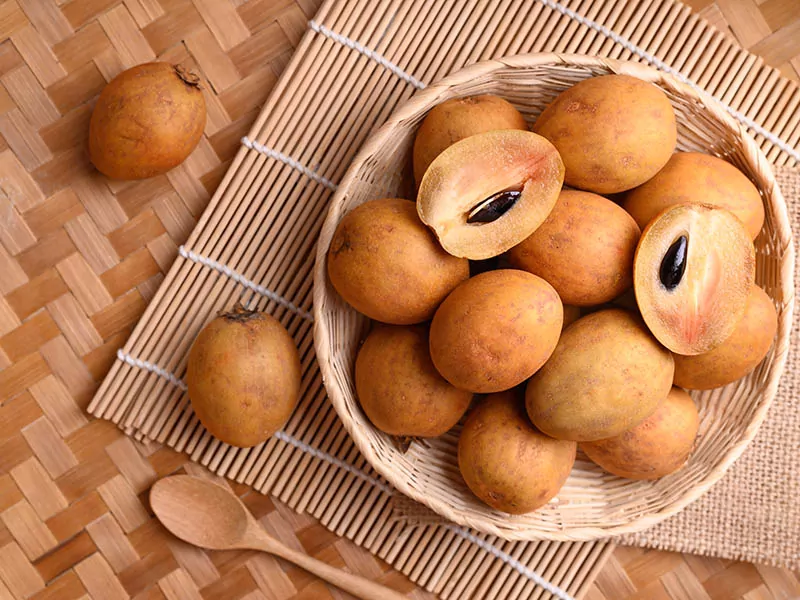
Chikoo or Sapodilla, Sapota, Naseberry is one of the favorite choices of tourists when coming to India. It originates in Mexico, the Caribbean, and Central America. Spanish colonists brought it to Asia. Its cultivation occurs widely in India, Malaysia, Thailand, and other Asian countries.
Its name takes from the word “Zapote” in Spanish. It is a large berry with pale yellow or earthy brown skin. Its grain texture is similar to a pear. There are about 1 to 6 black and inedible seeds in each fruit.
It is a sweet treat with soft flesh. In addition, you will feel a bit of malty flavor from this enchanting fruit. It is bad to consume unripe Chikoo because it has many astringent properties that dry out your mouth.
Nutrients: Calories, carbs, proteins, fats, and minerals.
Season: You can pick it up from January to February and May to July.
How to eat: Cut it into 2 halves after rinsing with water. Use a spoon to get the flesh out of the rind. Remember to remove its seeds.
19. Starfruit – Carambola
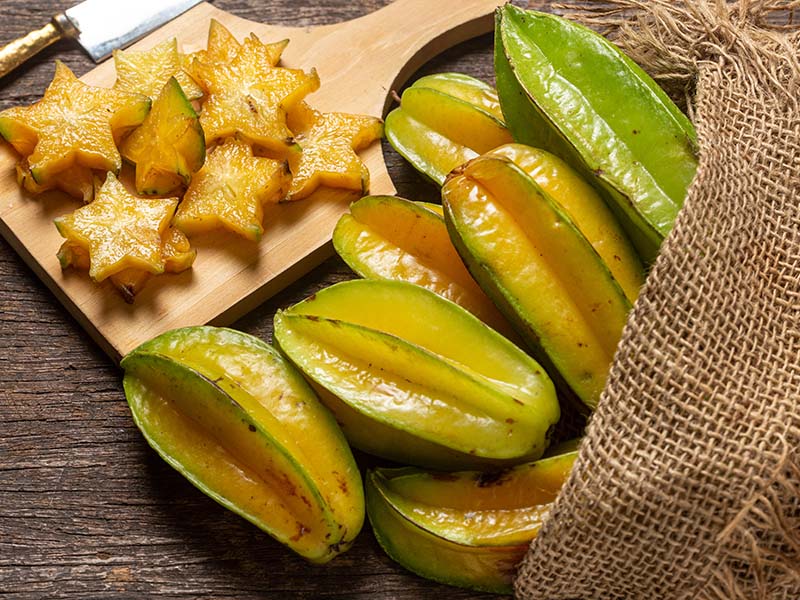
You can find Starfruit everywhere in India, but it is planted the most in the South of India. This fruit whose name begins with S is native to Southeast Asia, and Austronesesia traders brought it to the Indian subcontinent with Langsat, Coconut, and Santol.
Nowadays, Carambola cultivation occurs in China, Taiwan, America, Hawaii, Africa, and the Caribbean. You can use the entire Starfruit for cuisine. It looks dominant in the yellow and green skin. A thin wax layer wrapped outside makes it look eye-catching.
In particular, the edges along the sides create a unique structure. When you cut Starfruit horizontally, you will have slices similar to stars. You will love the juiciness and crispness of its flesh.
Most Starfruits have a sour flavor and slight sweetness. Ripe sweet Starfruit contains about 4% sugar. When consuming Starfruit, you can think of the mixed taste of apple, grape, pear, and citrus fruits.
In cuisine, Indians often combine it with vegetables or make jams. Unripe Starfruit usually appears in mouth-watering Indian salads. Also, you can enjoy drinks with Starfruit in India.
Nutrients: A source of fiber, vitamin C, B, folate, copper, magnesium, and potassium.
Season: Its peak season lasts from September to October and January to February.
How to eat: You can eat the whole starfruit after washing it with water.
20. Tree Sorrel – Bilimbi
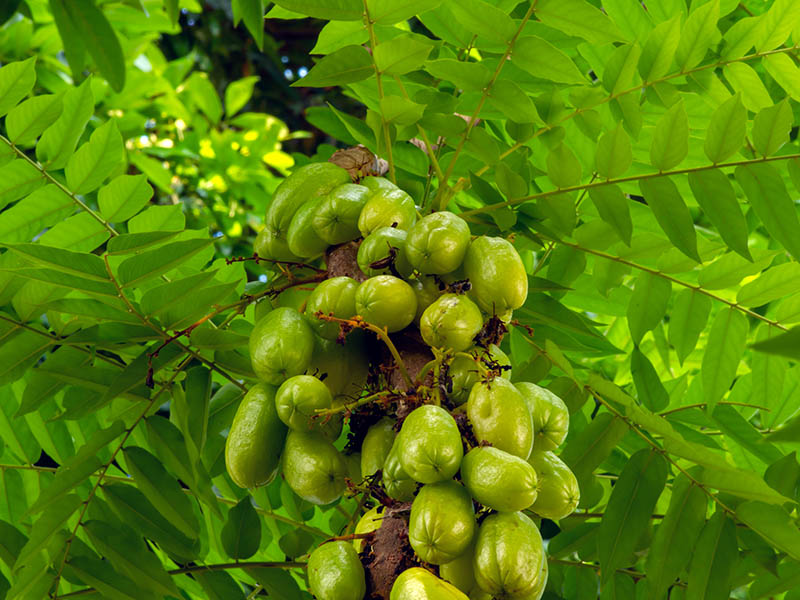
Bilimbi or Tree Sorrel is a typical fruit of India. It is a member of the Oxalidaceae family and has a close relation with Carambola. This excellent fruit is native to Indonesia and Malaysian. It appears commonly in the warm and coastal regions in India.
It is an ellipsoidal and elongated fruit. Its smooth skin with a wax layer will leave a deep impression on your mind. You can catch it in light green or yellowish-green when ripe. You will love the crispy, succulent and acidic flesh of it.
Because of its acidity, people do not consume fresh Bilimbi frequently. They usually mix it in lemonade-type drinks, pickles, chutneys, or jams. However, if you want to eat raw Bilimbi with spice and salt, you can take a trip to Maharashtra and Goa.
Nutrients: A rich source of vitamin C, B, calcium, flavonoids, tannins, iron, and terpenes.
Season: It is available all year round.
How to eat: It is safe to consume its skin, so you can eat its flesh after rinsing.
Explore the appearance, flavor, and health benefits of Bilimbi.
Fall In Love With Delicious Seedless Indian Fruits
This section is a suitable choice for those who hate wasting time removing seeds while eating fruits. It is time to stimulate your taste buds with these outstanding options.
21. Buddha’s Hand (Fingered Citron)
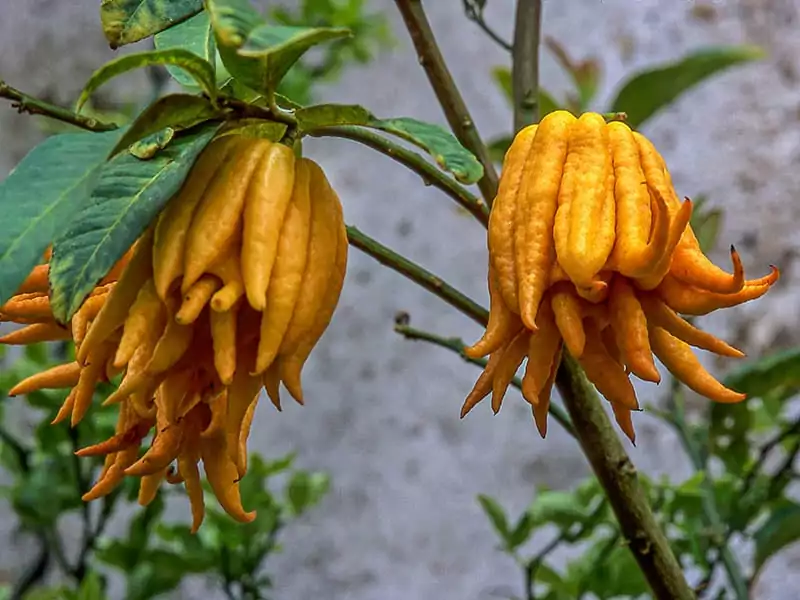
When speaking of Indian fruits, it is impossible not to mention Buddha’s Hand or Fingered Citron. Its appearance looks pretty similar to the shape of a hand with many tiny fingers. You can come across it as open-hand or closed-hand forms.
It looks outstanding with typical yellow skin. This fruit contains an acidic pulp layer. You will immerse yourself in its characteristic flavor. In particular, its fragrance will leave a profound impression.
You will not have to worry about biting the seed while eating it because it is seedless fruit. There is much controversy about its origin. Some ideas said it originated in the lower Himalayas region. However, botanists can’t tell whether China or India is its true home.
Nutrients: Rich in calcium, dietary fiber, vitamin C, carbs, proteins, fats, limonin, and diosmin.
Season: It is available from late-October to January.
How to eat: Remove the skin and eat its flesh, you can use its rind for salads or decoration.
Discover the outstanding flavor of authentic Buddha’s Hand.
22. Persimmon – Japani Phal
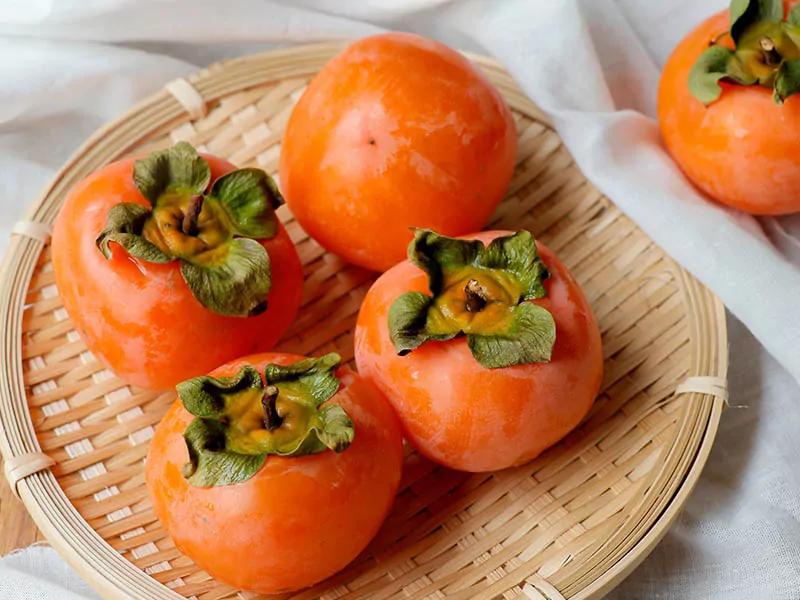
It is excellent to enjoy the wonderful flavor of Persimmon when visiting India. It originated in China and was widely grown in Southeast Asian countries and many other regions worldwide. European settlers brought it to India in the 20th century.
Its appearance is pretty like a tomato with yellow-orange or red-orange skin. It has astringent flesh when unripe, and its flesh has orange, yellow, or dark-brown shades when ripe. Sweetness is the dominant flavor of this fruit.
Persimmon has two main categories, including astringent and non-astringent Persimmons. The astringent version usually has a heart shape and contains many tannins, while the non-astringent type will have a tomato-like shape and fewer tannins.
Nutrients: Rich in potassium, vitamin A, B, C, manganese, tannins, and flavonoids.
Season: It is ripe from mid-September to November or December in India.
How to eat: It is simple to slice it into 2 parts and get its flesh with a spoon.
Take A Trip To India!
Do you know any other mouthwatering Indian fruits? I guarantee that you will fall in love with these yummy and exotic fruits in this post after consuming them. Therefore, it is time to take a trip to India to verify the information in this article.
It is a valuable post for travel, so please share it with people around you if they travel to India. Furthermore, I am delighted to receive your contribution ideas about the content of the post and your problems in the comment section. Thanks a lot!
